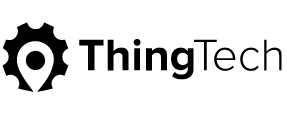Fleeting Moments in IoT: Part 2, Getting Your Pilot Off the Ground
Congratulations! Your ambition to bring IoT (the Internet of Things) into your company has moved you into the pilot phase. The question now becomes: Are your IoT goals centered on cutting costs or generating revenue? It’s critical that your objective aligns with organizational goals, and when the focus is on revenue generation, leveraging the IoT can earn you a seat at the revenue table.
Most organizations spend too much time fixated on cost saving in the pilot phase. There are plenty proven ways to achieve ROI in this manner: ultimately, any solution should provide automation throughout your organization, turning data into intelligence that you can act on in real-time.
However, customer loyalty is the key to unlocking profitable growth. In other words, existing customers generate revenue, tell others about their experiences (positive and negative), and provide feedback critical to enhancing your products and services. It goes without saying that customers are what’s most important to your business. And they’ll stick around if you’re the fastest, cheapest, best, most reliable answer to their problem(s).
Customers don’t care about how hard you’ve worked or how hard you’ve tried. What matters most to them is trust—if you’ve kept your brand promise. No one expects perfection, for the most part. Even with organizations that run like well-oiled machines, things don’t always go as planned. But for companies running a fleet of vehicles, mistakes can be costly. Traffic congestion, road accidents, and breakdowns can turn your trucks into twisted metal screws drilled into concrete roads.
Investing in the IoT should make your job less stressful, and provide scalable service level improvements. A good fleet management solution gives you active control of your vehicles. It enables you to prevent molehills from becoming mountains, and helps you to see around corners, anticipating service interruptions to your customers. Now that your pilot is off the ground, a good place to start is by homing in on a specific use case that benefits from 1) dispatch and route optimization, 2) vehicle diagnostics, and 3) real-time work order visibility.
Dispatch and route optimization play a critical role by automating your ability to navigate quickly and cost-efficiently to your customers. Adding a suite of APIs to the mix will score more points with customers by helping to predict and determine routes based on current road conditions, traffic, historical information, and weather-related data. Smart technology like this also opens the door to mobile applications and text alerts that keep customers up-to-date with their scheduled deliveries or service.
The next metric to focus on is vehicle diagnostics. Unexpected breakdowns on the road put unnecessary pressure on your operations, and usually result in detractors (i.e. unhappy customers who share their experience with others), towing fees, repairs, part replacement, and employee downtime. Adding an enterprise asset management component to your fleet management pilot is invaluable. With the ability to pull, store, and analyze data directly from your vehicles onboard computer system in real-time, you can improve uptime and facilitate proactive, scheduled maintenance.
The third metric to look at is real-time work order visibility. To monitor and measure how your workers are performing at the customer end-point, you need to add a mobile workforce application to your fleet management solution. Once workers have access to a mobile application that gives them the ability to record work start and stop times in real-time, you can automate alerts to notify you if a job takes longer than expected, or hasn’t been completed at all. This data can also be used to 1) achieve better dispatching based on location and job types, and 2) develop score cards for vehicle and drivers.
If your IoT pilot closes the gap between where you are and where you want to be, you’re moving forward in the right direction. The success of your pilot should be measured on revenue generation versus cost savings, and how well you execute service delivery using the an IoT fleet management solution.
In the next blog of this three-part-series, we’ll examine how to squeeze the juice out of your freshly unboxed fleet management solution once you’re pilot has landed.
Changing the future happens today. Contact us anytime to discuss your GPS & cellular fleet management needs, or to schedule a free demo.

